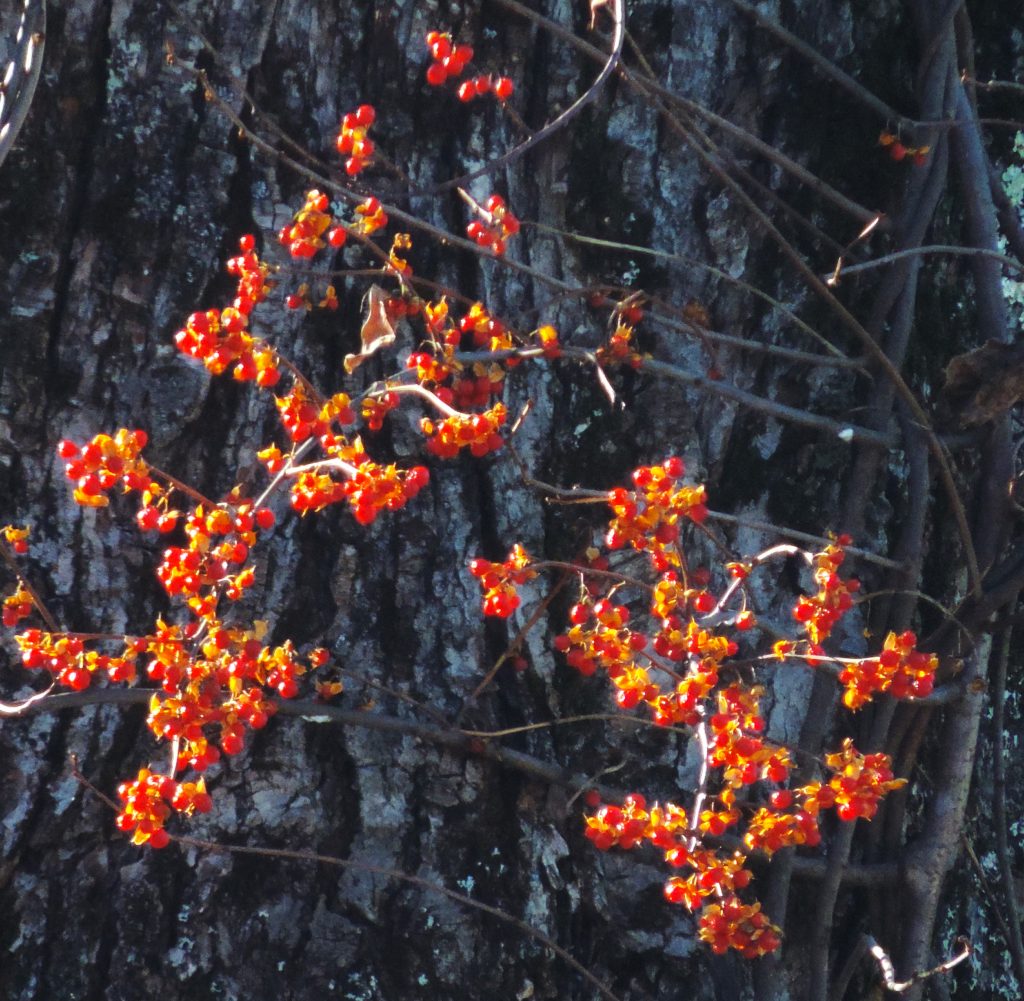
Mary Howe of Andover honors her property and is an exemplary steward of the land. In her travels through town she has noticed the invasive Oriental Bittersweet growing wild and unrestrained, choking out beautiful Maple and Oak trees that are over a century old that help define our town. She came to the Andover New Hampshire Garden Club to ask if we could help spread the word about this invasive species.
The following has been reprinted with permission from the UNH Extension Service Website.
“The golden Oriental Bittersweet (Celastrus orbiculatus) is a deciduous, woody, perennial vine native to China, Japan and Korea, that was brought to this country in the mid-1800s as an ornamental plant. Bittersweet is now considered a serious invasive species because it poses a significant threat to native plants.
Bittersweet vines have alternate, glossy, round or oval leaves that are 2-5” long. The roots are a distinctive orange color, while the vines are light to medium brown with a white pith. Bittersweet has small, greenish-yellow, five-petaled flowers, which produce green fruit in early summer that ripens to yellow and orange by the fall. The plant’s stems and bright fruits are often cut in the fall and used for decoration which can contribute to further spread of this invasive plant. Birds are also quite adept at “planting” new bittersweet vines. Many bird species enjoy eating bittersweet fruit and distribute the seeds to new areas in their droppings.
Oriental Bittersweet can be found in grasslands, woodlands, marsh edges and along road sides. It is often found in open, sunny sites, but its tolerance for shade allows it to invade forested areas as well. It is an extremely aggressive vine that climbs on other vegetation, restricting its host plant’s access to sunlight, nutrients and water. The added weight of bittersweet vines also makes trees and other plants more vulnerable to storm damage.
How to Control
If the bittersweet infestation is light, hand-pulling vines can be effective, especially before the vines have fruited. Place vines in plastic trash bags and dispose of them, or bake the vines in the sun on a tarp or on a paved surface to kill the roots and seeds. Bittersweet often resprouts from root fragments, so use care to remove as many roots as possible to avoid regrowth.
Heavier infestations may be controlled by cutting stems and painting them with an herbicide in early summer through winter.”
Ruth Smith, of the University of New Hampshire Cooperative Extension, also explains that using chemical herbicides to control invasive species can only be done by landowners on their own property (following the directions on the container – the label is the law) or by licensed pesticide applicators. Garden club members working on town property (or other land not owned by themselves) may not apply any chemical treatment.
If you love the look of bittersweet in your garden, consider planting native, American bittersweet (Celastrus scandens). American bittersweet can be used in floral arrangements in much the same way as oriental bittersweet.
More information about controlling invasive plants can be found at extension.UNH.edu, Integrated Pest Management for Woody Invasive Plants.
Thank you Mary for bringing this meddlesome plant to our attention!